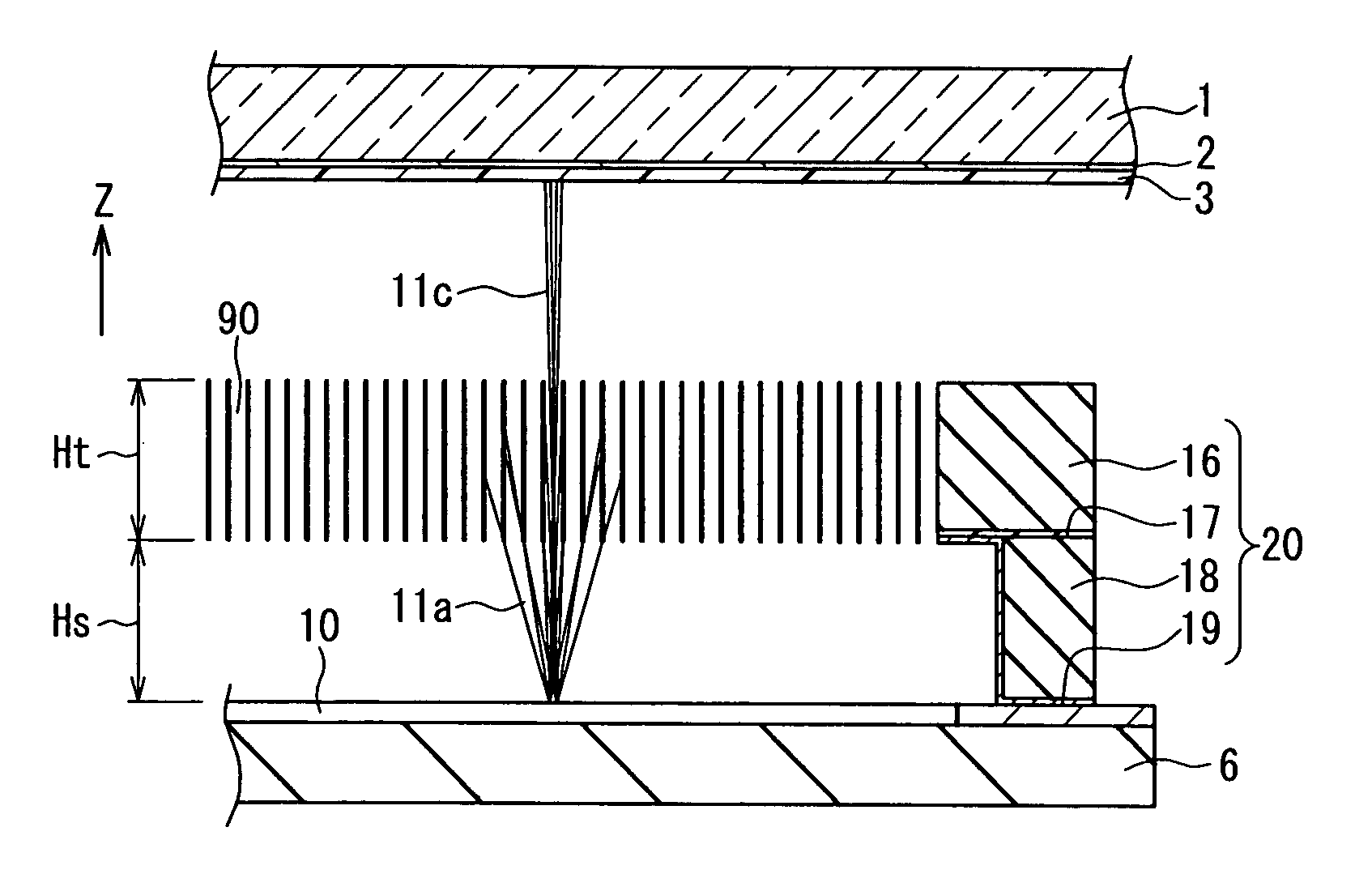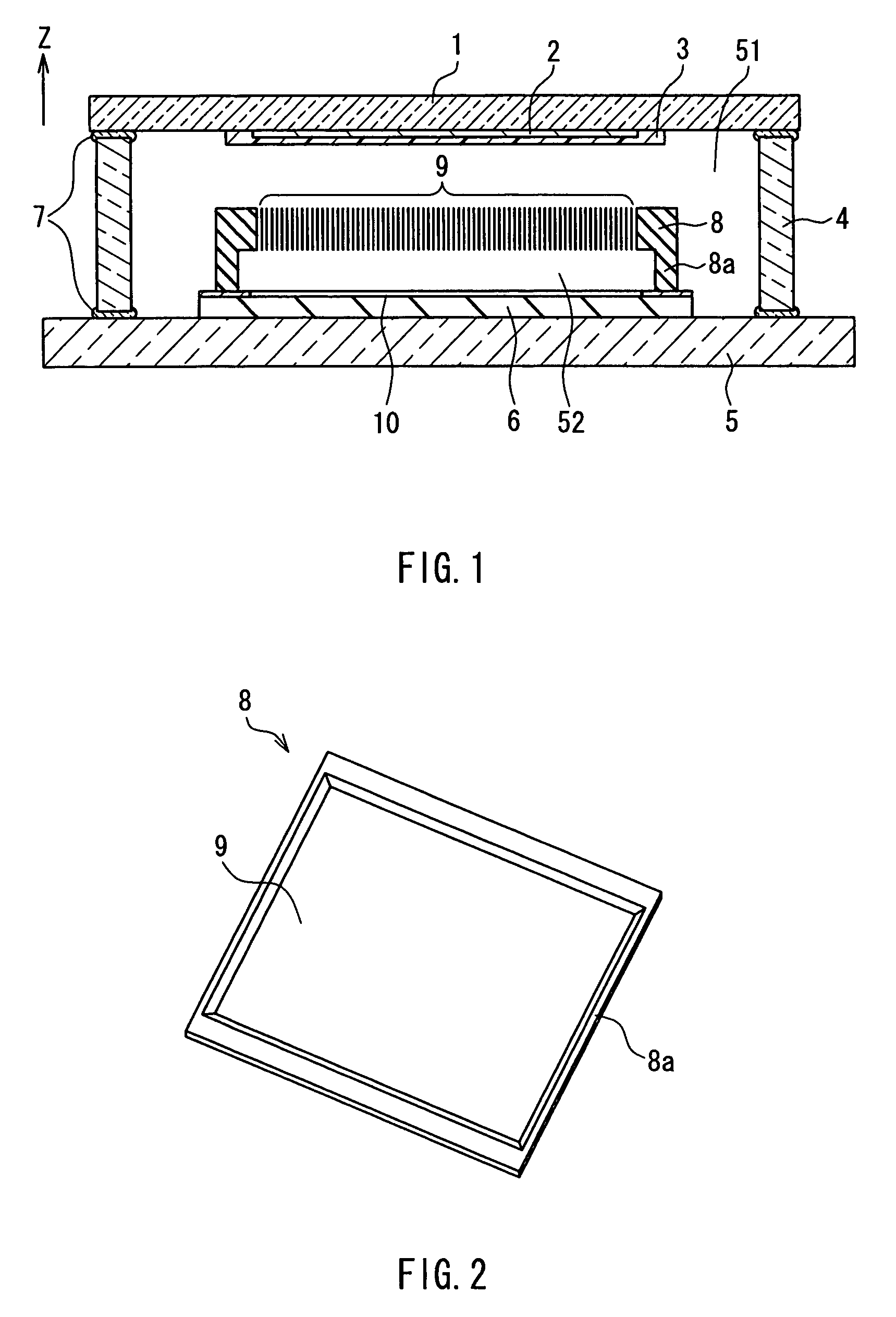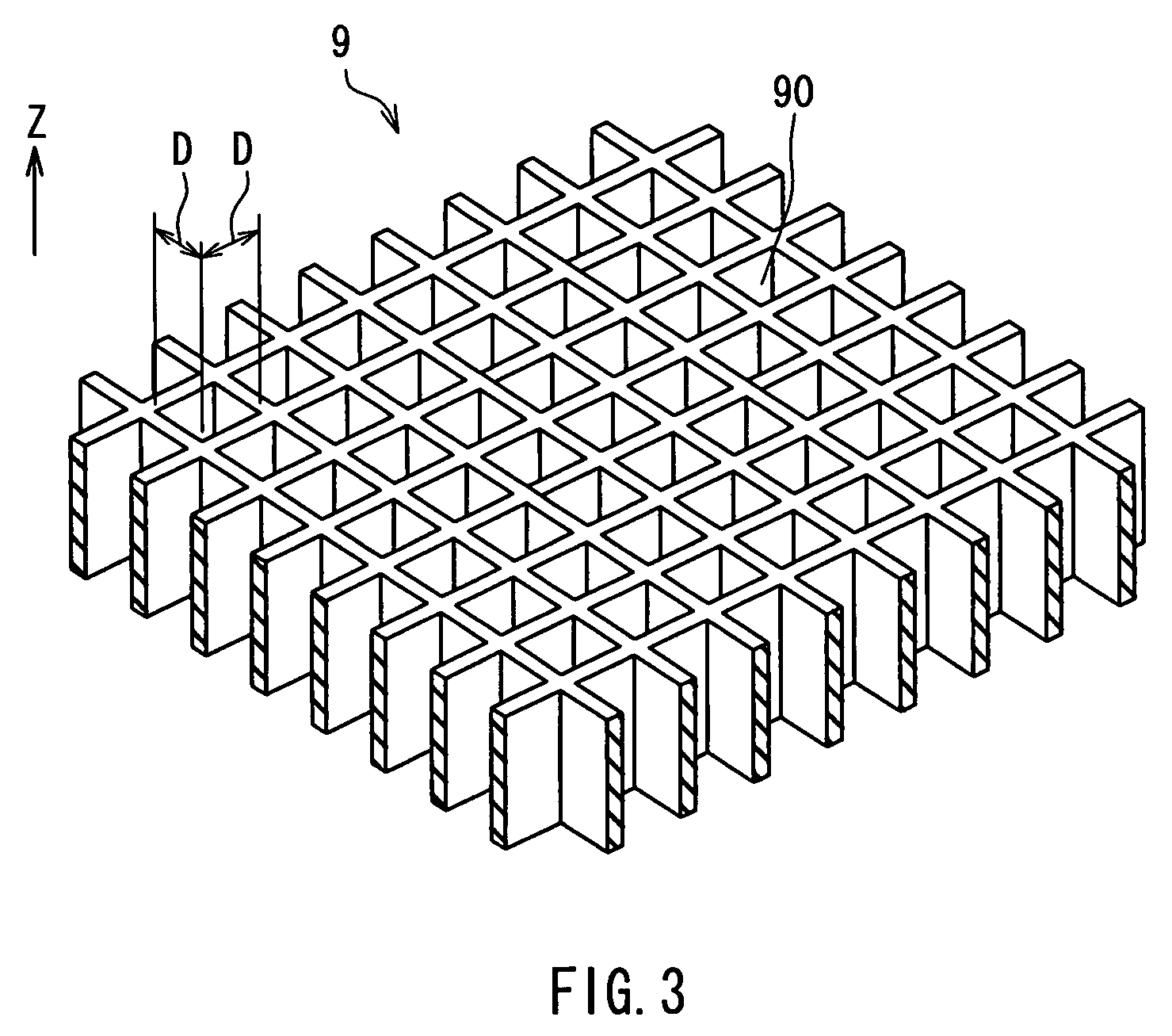Mesh structure and field-emission electron source apparatus using the same
a technology of electron source and mesh structure, which is applied in the manufacture of electric discharge tubes/lamps, instruments, discharge tubes luminescnet screens, etc., can solve the problems of increasing the size of imaging pixel, difficult to achieve the high-definition field-emission electron source display apparatus and the high-definition field-emission electron source imaging apparatus, and reducing the amount of electron beam reaching the target. , the effect of suppressing the decrease in the amount of electron beam
- Summary
- Abstract
- Description
- Claims
- Application Information
AI Technical Summary
Benefits of technology
Problems solved by technology
Method used
Image
Examples
embodiment 1
[0174]FIG. 1 is a sectional view showing a mesh structure and a field-emission electron source apparatus including the mesh structure according to Embodiment 1 of the present invention.
[0175]As shown in FIG. 1, a field-emission electron source apparatus according to Embodiment 1 of the present invention is provided with a vacuum container including a front panel 1 formed of light-transmitting glass, a back panel 5 and a wall part 4. Using a vacuum sealant 7, for example, frit glass for high-temperature burning or indium for low-temperature sealing, the front panel 1 and the wall part 4 are fixed firmly and sealed, and the back panel 5 and the wall part 4 are fixed firmly and sealed, so that the inside of the vacuum container is maintained under vacuum. For convenience of description in the following, an axis parallel with a direction normal to the front panel 1 and the back panel 5 is referred to as a Z axis.
[0176]An inner surface of the back panel 5 is provided with a semiconductor...
embodiment 2
[0278]FIG. 12 is a sectional view showing a mesh structure and a field-emission electron source apparatus including the mesh structure according to Embodiment 2 of the present invention.
[0279]As shown in FIG. 12, the field-emission electron source apparatus according to Embodiment 2 of the present invention is different from that according to Embodiment 1 in that a mesh structure 20 has a three-layer structure unlike the mesh structure 8. In the following, the description of portions that are the same as those in Embodiment 1 will be omitted.
[0280]As shown in FIGS. 12, 13, 14A and 14B, the mesh structure 20 according to Embodiment 2 of the present invention has the three-layer structure including a first electrode layer 19 on a side of the field-emission electron source array, a second electrode layer 16 on a side of the target 3 and an insulating layer (intermediate layer) 17 therebetween. The insulating layer 17 ensures the insulation between the first electrode layer 19 and the s...
embodiment 3
[0320]FIG. 19 is a sectional view showing a mesh structure and a field-emission electron source apparatus including the mesh structure according to Embodiment 3 of the present invention.
[0321]As shown in FIG. 19, the field-emission electron source apparatus according to Embodiment 3 of the present invention is different from those according to Embodiments 1 and 2 in that a mesh structure 23 has a five-layer structure unlike the mesh structure 8 in Embodiment 1 and the mesh structure 20 in Embodiment 2. In the following, the description of portions that are the same as those in Embodiments 1 and 2 will be omitted.
[0322]As shown in FIGS. 19 and 20, the mesh structure 23 formed of the silicon-containing material according to Embodiment 3 of the present invention is obtained by providing a second insulating layer 21 and a third electrode layer 22 in this order on the surface of the mesh structure 20 on the side of the target 3 in Embodiment 2. The third electrode layer 22 is supplied wi...
PUM
 Login to View More
Login to View More Abstract
Description
Claims
Application Information
 Login to View More
Login to View More - R&D
- Intellectual Property
- Life Sciences
- Materials
- Tech Scout
- Unparalleled Data Quality
- Higher Quality Content
- 60% Fewer Hallucinations
Browse by: Latest US Patents, China's latest patents, Technical Efficacy Thesaurus, Application Domain, Technology Topic, Popular Technical Reports.
© 2025 PatSnap. All rights reserved.Legal|Privacy policy|Modern Slavery Act Transparency Statement|Sitemap|About US| Contact US: help@patsnap.com



